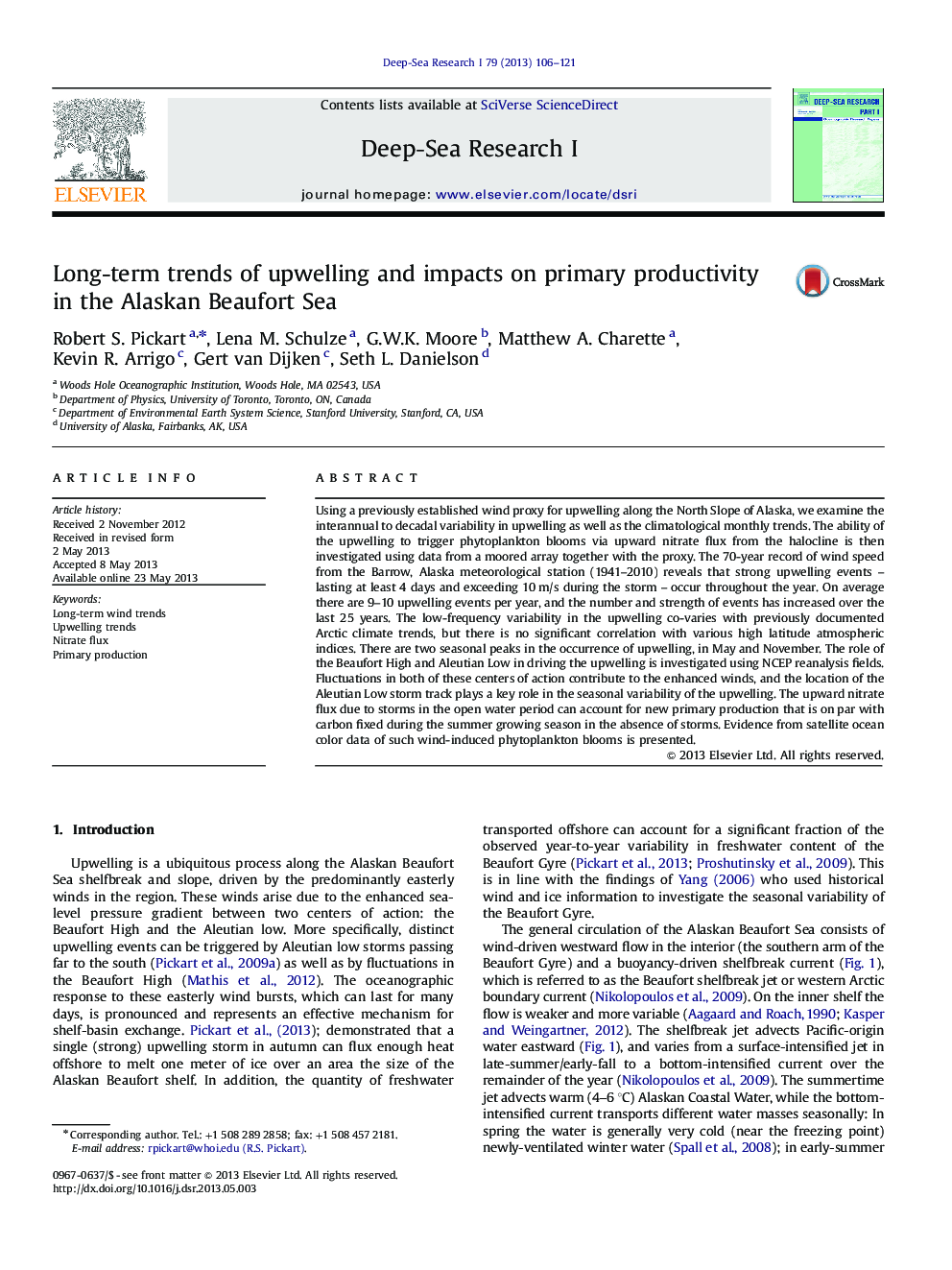| Article ID | Journal | Published Year | Pages | File Type |
|---|---|---|---|---|
| 6383754 | Deep Sea Research Part I: Oceanographic Research Papers | 2013 | 16 Pages |
Abstract
Using a previously established wind proxy for upwelling along the North Slope of Alaska, we examine the interannual to decadal variability in upwelling as well as the climatological monthly trends. The ability of the upwelling to trigger phytoplankton blooms via upward nitrate flux from the halocline is then investigated using data from a moored array together with the proxy. The 70-year record of wind speed from the Barrow, Alaska meteorological station (1941-2010) reveals that strong upwelling events - lasting at least 4 days and exceeding 10Â m/s during the storm - occur throughout the year. On average there are 9-10 upwelling events per year, and the number and strength of events has increased over the last 25 years. The low-frequency variability in the upwelling co-varies with previously documented Arctic climate trends, but there is no significant correlation with various high latitude atmospheric indices. There are two seasonal peaks in the occurrence of upwelling, in May and November. The role of the Beaufort High and Aleutian Low in driving the upwelling is investigated using NCEP reanalysis fields. Fluctuations in both of these centers of action contribute to the enhanced winds, and the location of the Aleutian Low storm track plays a key role in the seasonal variability of the upwelling. The upward nitrate flux due to storms in the open water period can account for new primary production that is on par with carbon fixed during the summer growing season in the absence of storms. Evidence from satellite ocean color data of such wind-induced phytoplankton blooms is presented.
Keywords
Related Topics
Physical Sciences and Engineering
Earth and Planetary Sciences
Geology
Authors
Robert S. Pickart, Lena M. Schulze, G.W.K. Moore, Matthew A. Charette, Kevin R. Arrigo, Gert van Dijken, Seth L. Danielson,
